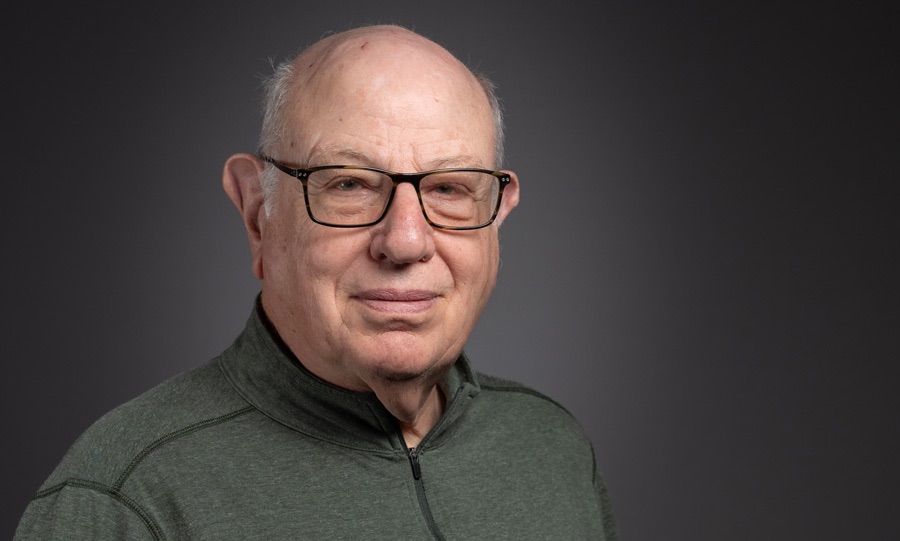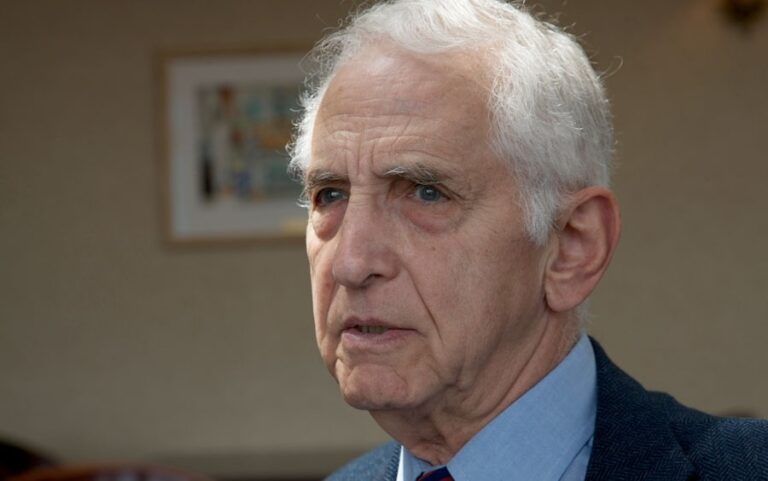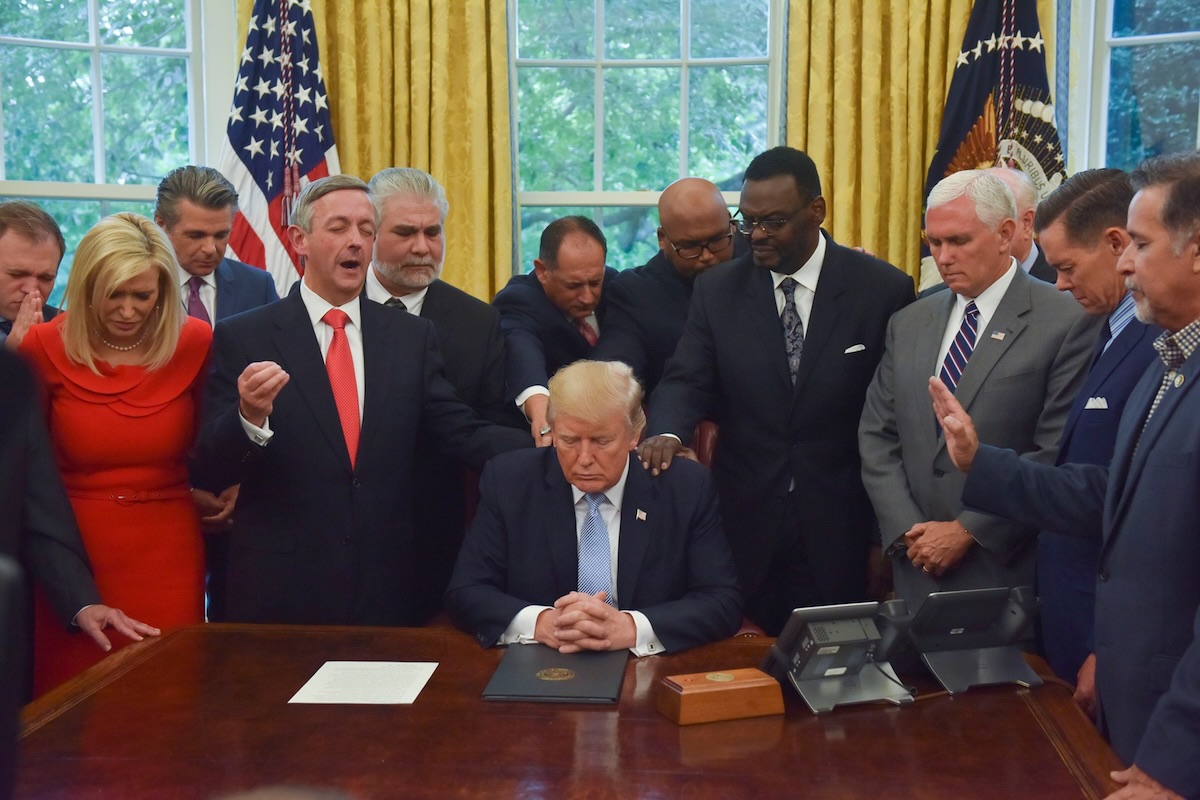America spends more on its arsenal than the other nuclear nations combined, wasting its national treasure imperiling the future of humankind
By Herbert Rothschild for Relocations: Ashland.news
Those who moved to this area since the 1980s may not know that Ashland is a Nuclear Free Zone. No activity — R&D, manufacturing or use — related to either nuclear weapons or nuclear power may occur within the city limits. Ashland voters passed a ballot measure to that effect in November 1982, at the height of the global grassroots movement to end the U.S.-U.S.S.R. nuclear arms race. Ashland was only the second, and at that time the largest, city in this country to declare itself a NFZ.
Out of that campaign Peace House was born to carry on work for nuclear sanity. It remains the most important peace organization in the Rogue Valley and deserves our support. You can sign on for Clear Actions, its highly informative weekly online bulletin, and donate at peacehouse.net.
Peace House is organizing the 2024 observance of the atomic bombings of Hiroshima and Nagasaki. On Tuesday, Aug. 6, from 8 to 9 a.m. at the entrance to Lithia Park, there will be the traditional ceremony of remembrance and recommitment to abolishing nuclear weapons. After the lighting of the candle and an invocation, the gong will be struck at 8:15, when the bomb exploded. Hideko Tamura Snyder, who survived the blast, will speak and a proclamation from the city will be read. The event will conclude with the water ceremony.
On Friday, Aug. 9, there will be a program at Peace House honoring Daniel Ellsberg, who died last year. Although best known for risking his freedom by releasing to the press what came to be known as the Pentagon Papers, his major focus was on ending the threat of nuclear war. He knew whereof he spoke, because he had worked on nuclear strategy for the Rand Corp. before realizing that he had to dedicate his life to peace. In 2017 he published “The Doomsday Machine: Confessions of a Nuclear War Planner.” His goal was to convince the world that as long as nations prepare for nuclear war, it’s a matter of when, not if, we will have one.
The Aug. 9 event will begin at 3:30 p.m. with social time. The program, starting at 4, will feature a video of Ellsberg speaking about “A Common Insanity,” which runs just under 40 minutes. Then there will be sharing about what we can do to stop the second nuclear arms race.
Those of us who worked so hard to stop the first one can be forgiven for thinking our work was done when the U.S. and the U.S.S.R. began to dismantle their arsenals following the 1991 START I treaty and the dissolution of the Soviet Union. It proved not to be so, and we might ask ourselves why the U.S. didn’t lead the world down the path to complete abolition. After all, the “Soviet threat” was always the justification for our nuclear weapons program, and that justification had ended.
But we didn’t make a commitment to nuclear abolition. Within the limits of START and the Comprehensive Test Ban Treaty, we continued research and development on nuclear weapons, and funded what was called a safe stockpile maintenance program to make sure we could rely on our arsenal if we decided to use it. In sum, despite repeated statements by our presidents that abolition is our goal, there never was an intention to give up our capacity to wage nuclear war even knowing that a major exchange of weapons would mean the end of human civilization. Democratic presidents have been even worse than Republican presidents in this regard.
In 2023, the nine nuclear-armed states spent $91.4 billion on their nuclear arsenals, $10.8 billion more than the previous year. Our country continues to lead the way, spending $51.5 billion, which is more than all the others combined. China spent $11.9 billion, and it begins from a much smaller base than ours. Russia spent $8.3 billion. If you are determined to believe that every bad thing we do is because the real bad guys force us to do it, these numbers should give you pause. We have intentionally touched off the second nuclear arms race.
Since we cannot plausibly maintain that the motivation for our conduct this time is outside ourselves, what is there within that drives this costly madness? What else but the military-industrial complex that Eisenhower warned us of in his farewell address? We have vast governmental and corporate establishments whose existences are predicated on never-ending preparations for war, including nuclear war.
Corporations spent dearly to convince Congress to keep the money flowing. Last year, Boeing spent $17.6 million lobbying, Lockheed Martin $16 million, General Dynamics $15.4 million, RTX $14.7 million, Northrup Grumman $11.6 million, etc. And they fund the think tanks that give intellectual cover to this extraordinarily dangerous waste. In 2023, Lockheed Martin funded seven think tanks, Northrup Grumman six, Boeing five, BAE Systems four.
The U.S. is currently embarked on a complete overhaul of its land-based ICBM arsenal. The Sentinel overhaul involves 450 silos across five states, their control centers, three nuclear missile bases and several testing facilities. The official price tag was $96 billion, but this year William LaPlante, undersecretary of Defense for Acquisition and Sustainment, announced that it’s now estimated to cost $140.9 billion.
That jump prompted the Congressional Nuclear Weapons and Arms Control Working Group, in which Sen. Jeff Merkley of Oregon participates, to send a letter in June to Secretary of Defense Lloyd Austin. In it, the group said, “(T)he Sentinel program’s astronomical costs are a result of underestimated costs, poor assumptions, incomplete data, and a lack of oversight. Given these egregious overruns and the failure to truly consider viable alternatives, the Air Force’s decision to continue the Sentinel program is disheartening.”
While the U.S. wastes its national treasure imperiling the future of humankind, the countries that haven’t succumbed to the illusion of power that nuclear weapons hold out have called for nuclear abolition. The U.N. Treaty on the Prohibition of Nuclear Weapons entered into force in 2017, and to date 93 countries have signed it and 70 ratified it. I’m not sure what it means for us to be the leader of the free world, but I’d settle for us to be a member of the sane world.

Herbert Rothschild’s columns appear on Friday in Ashland.news. Opinions expressed in them represent the author’s views and may or may not reflect those of Ashland.news. Email Rothschild at herbertrothschild6839@gmail.com.


